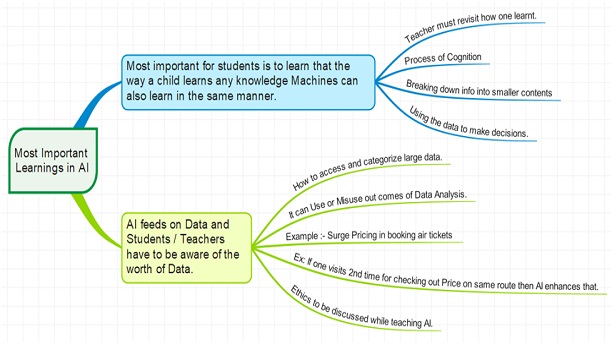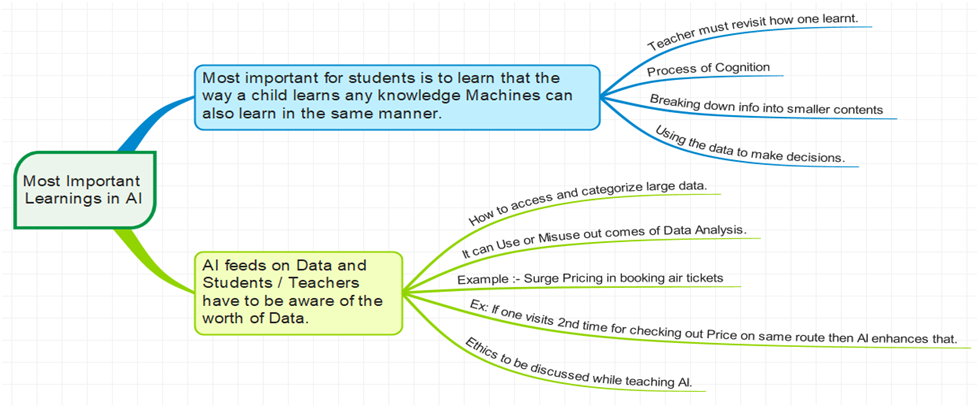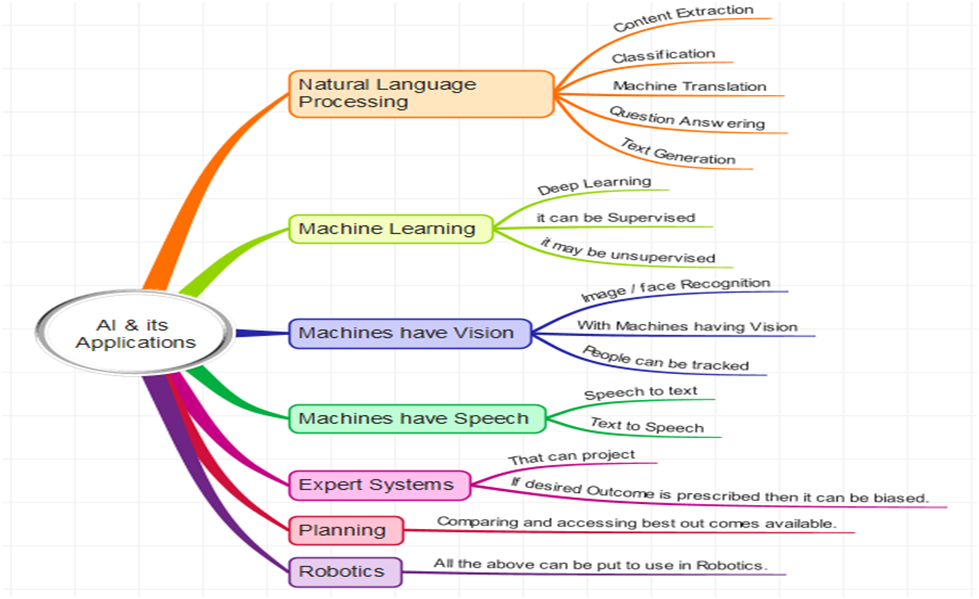Artificial Intelligence in Education landscape

Some of us may have heard about Artificial Intelligence. This is a branch of computer science associated with the building of smart machines that can perform tasks that otherwise require human intelligence. AI endeavors to simulate human intelligence in machines so that they are able to think, perceive, learn, problem solve and even take decisions. Computer systems powered by deep learning and machine learning are able to carry out such tasks. This is achieved by bringing together thinking, perception and action using mathematical algorithms. In AI, each and every decision is now driven by data, where machine learning predicts human behavior based on accumulated data.
 AI in Schools
AI in Schools
In India, the education sector can gain a lot by the inclusion of AI within the classroom setting. In our country, we have a dearth of qualified teachers at elementary, secondary and even at higher level of schools. This could come in the way of providing education to all in our country of 133.92 crores, a figure that makes us the second largest population in the world after China. This problem of making quality education accessible and inclusive can be solved to a large extent by the intervention of revolutionary technology such as AI in classrooms.
AI can emerge as a solution when there is a need for good quality teachers. Schools and classrooms can empower students with this technology; the AI systems on their part can conform to the specific abilities of students in learning and grasping of concepts. This innovative technology is able to find out about the strengths and weaknesses of students and cater to their needs in the best manner possible. This in turn would solve the problems of accessibility of education and also ensure that the learning being provided conforms to established quality standards.
The need to increase awareness about AI in schools
Students in K-12 need to be made aware about AI and its various applications. They should know that in this day and age, computers powered by AI can see, hear, and even speak. Computers are able to do all this and more through data made available. Learners at the school level should be made aware of how data related acquisition can be done. They need to know that AI can be beneficial or harmful in the long run depending on intentions of the corporations collecting the data from individuals. There is an urgent need to associate ethics with data management and availability for AI to be helpful to people in general and not invade on the privacy of individuals.
What can teachers do to facilitate the process?
During or after each chapter, the teachers can talk about how the information was broken down to be taught. They can use flow charts to discuss this process of breaking down of information with students. Teachers can help create awareness that machines can also be made to learn through the same process but the information has to be broken down. This process of cognition can be taught for each subject.
This will develop the basic skill set in students to break down information and make it readily available for teaching and learning of machines, a process which is quite similar to humans. Finally, when the students get exposed to coding or experiments such as Infinite Drum Machine, they will be more aware about what it entails. They would know that this is just a process of judging and categorizing data and producing a result based on analyzing/ categorizing data, which can be used for further decision making.
So, what is the most important learning in AI?
It is extremely important for students to know that the way a child internalizes any knowledge; machines can also learn in the same manner.
After each lesson, the teacher must revisit the process of knowledge delivery. They would need to revisit how one learnt so that the students are well aware of the process of cognition. The whole chapter can be broken down into smaller content. The teacher has to convey the exact procedure of using data to make decisions to students.
The second important learning is the fact that AI feeds on data. This point cannot be emphasized enough. Both stakeholders – students as well as teachers – need to be made aware of the worth of data for the decision making capabilities of computers.
Students need to know the process of accessing and categorizing data. They need to know that the results of data analysis can be used or misused – depending on the vested interests behind these decisions. The surge pricing in the booking of tickets can be cited as an example in this context. A person visiting an online booking portal for the second time for checking out prices on the same route would find that the prices of air tickets have increased considerably. Students need to be made aware that ethics has a major role to play in this whole process.
 So, what are the different applications of AI?
So, what are the different applications of AI?
AI can be used in Natural Language Processing, Machine Learning, Expert Systems, and Robotics, to mention a few areas. Machines – fed with AI – are able to use image or face recognition to track people. Machines with speech recognition are also able to convert speech to text and vice versa.
 EU’s Road map on AI
EU’s Road map on AI
The European Union has divulged new strategies and rules for development and right use of artificial intelligence and data. The idea is to ensure that the potential of AI and big data does not come in the way of compromising individual privacy and values. The EU wants to cover up lost ground due to internet and not get controlled by the US and China. They want a scenario wherein new technology like Facial Recognition comes with more trust from people. The idea is that facial recognition should be responsible as well as human centric. EU wants big corporations to share data or face restrictions. Ideally, Google, Facebook, etc. have to be more transparent. Therefore, the battle for industrial data will be most crucial. The next level of regulation would need to modify the process in which AI feeds on data. There has to be easy access to data for common masses without compromising on security or quality. AI can reproduce Human Language and can be used to make chatbots. In many instances, AI can also be used to generate fake news.
All the stakeholders need to realize that AI is not good or bad in itself; the exact nature of AI would depend on how it is being used. The food for AI is data, which in turn needs to have consent of people. Ethical code related to the same needs to be defined.
(Harish Sanduja, Director Schools , Seth Anandram Jaipuria Group of Schools)
